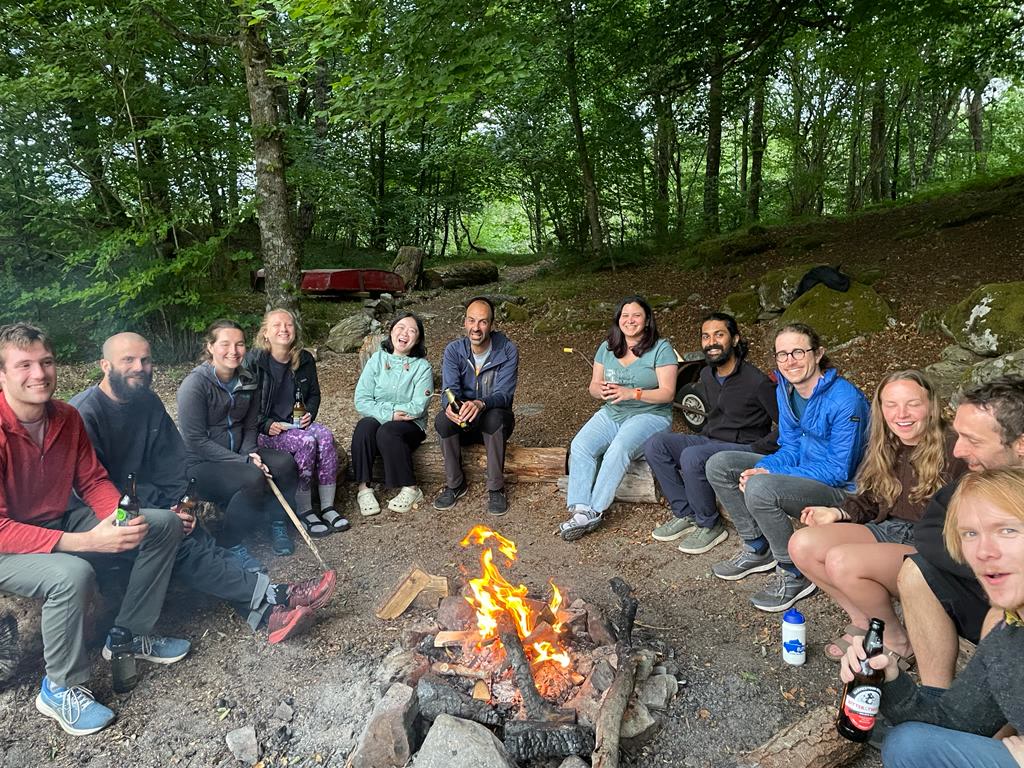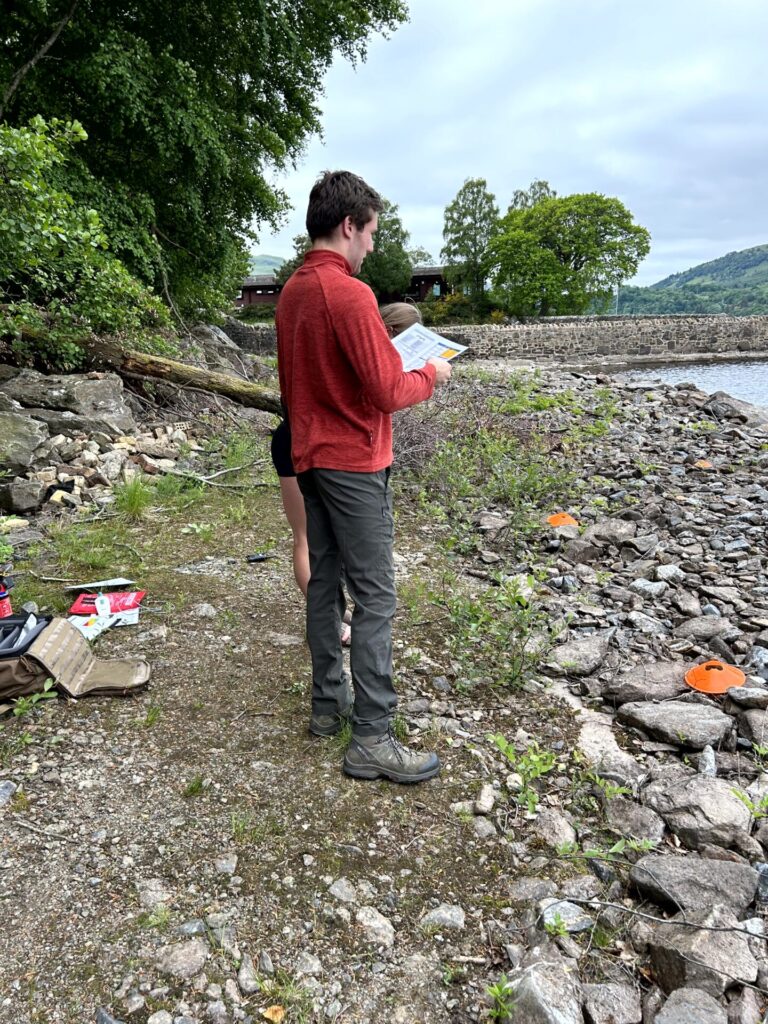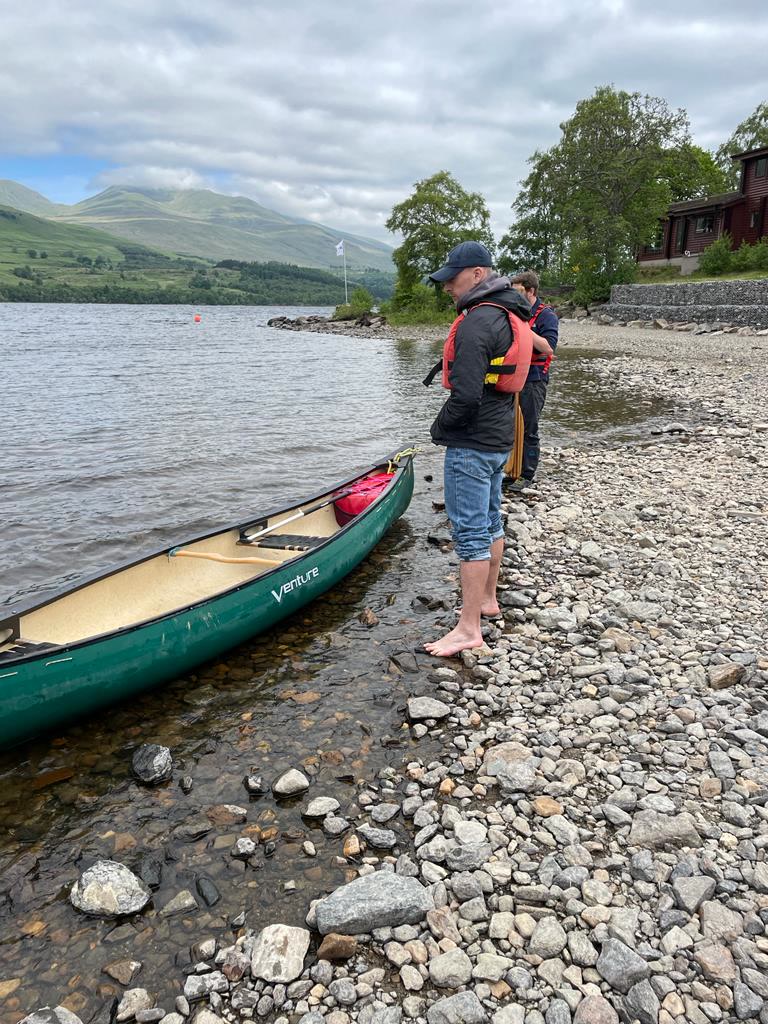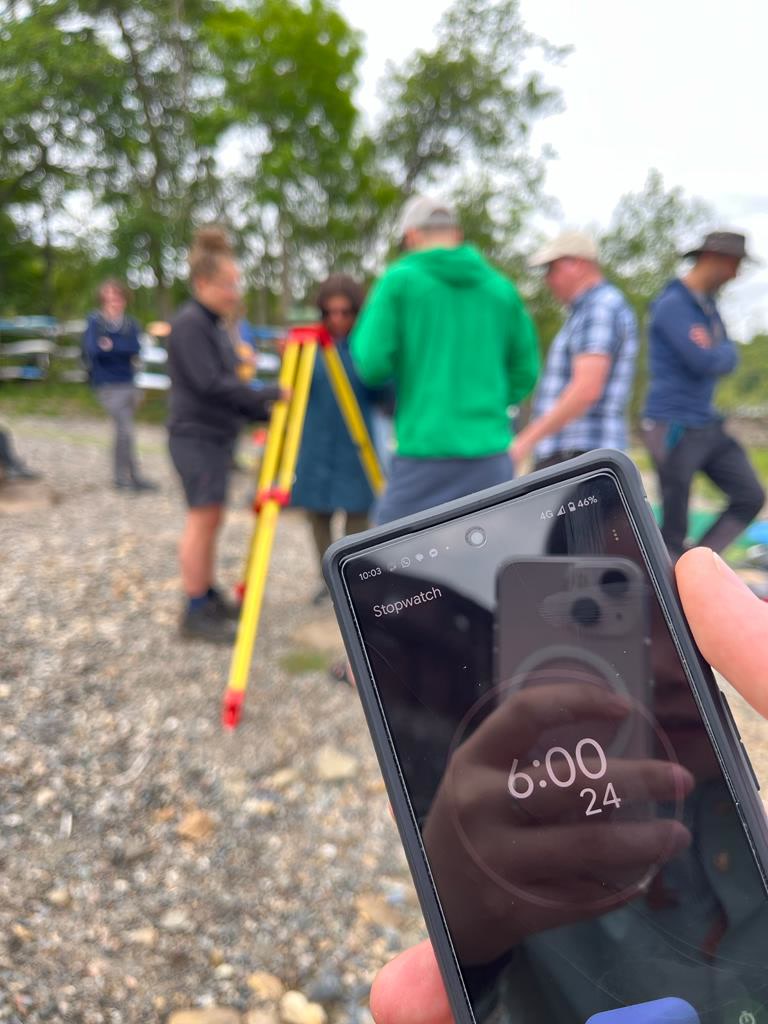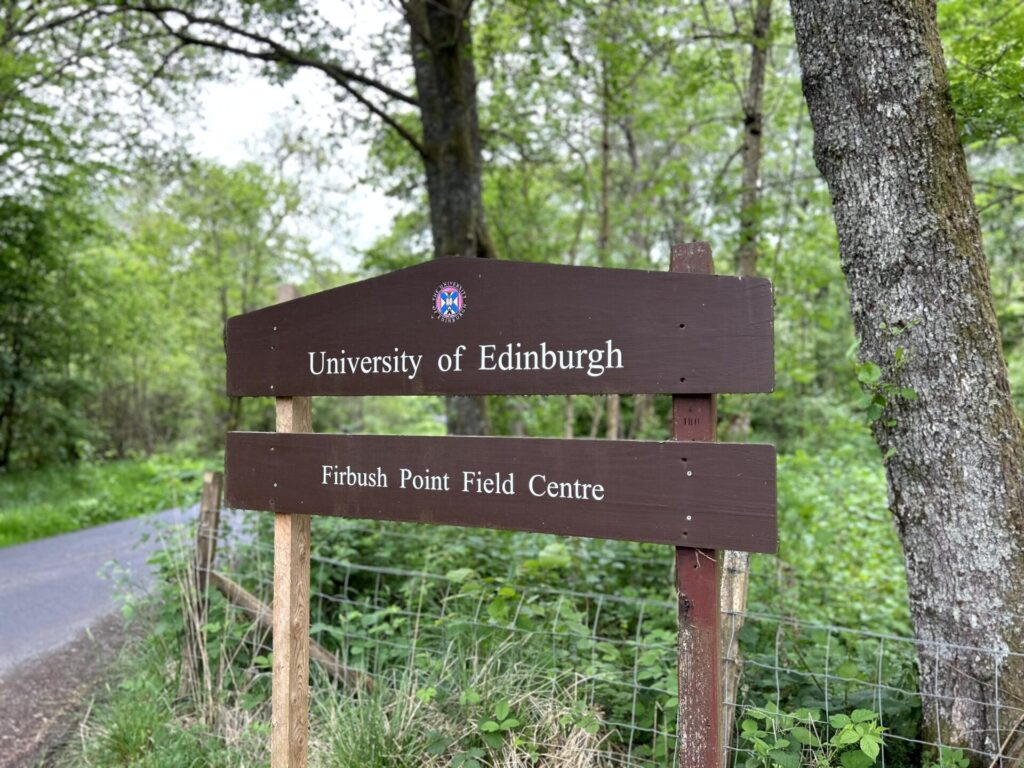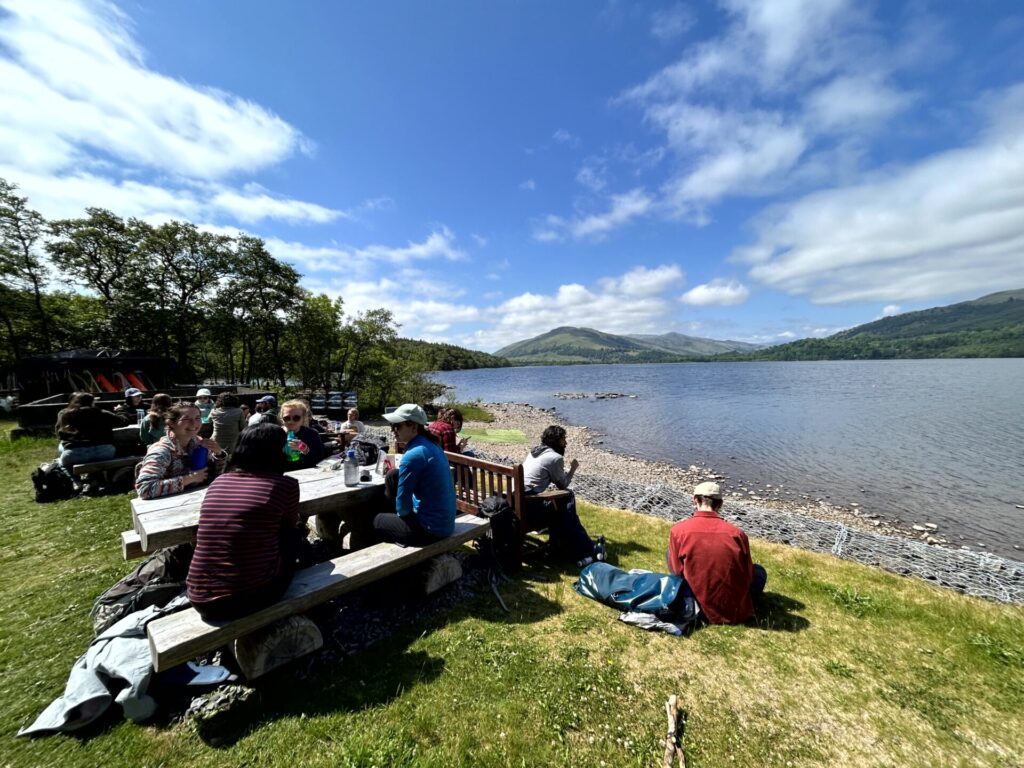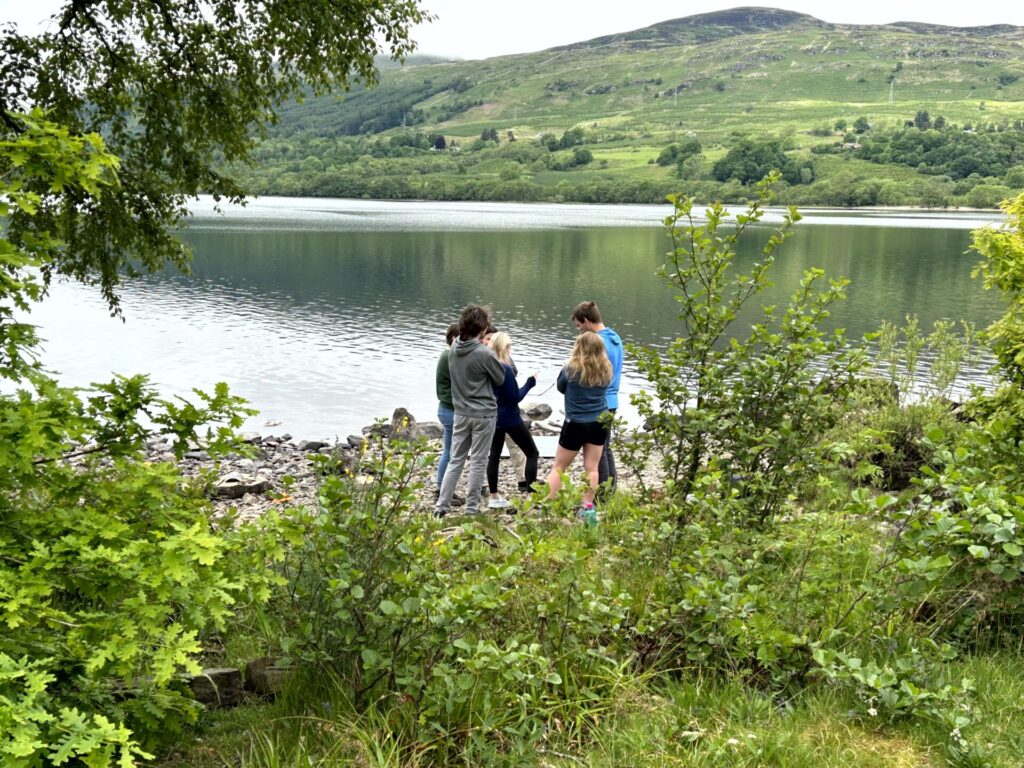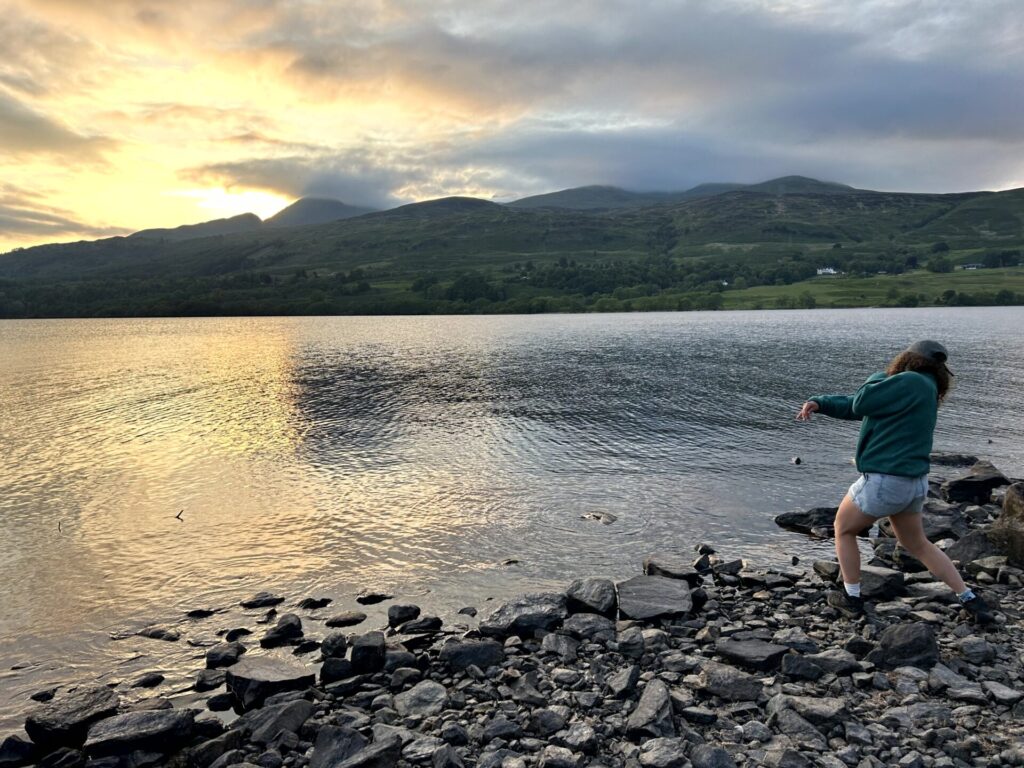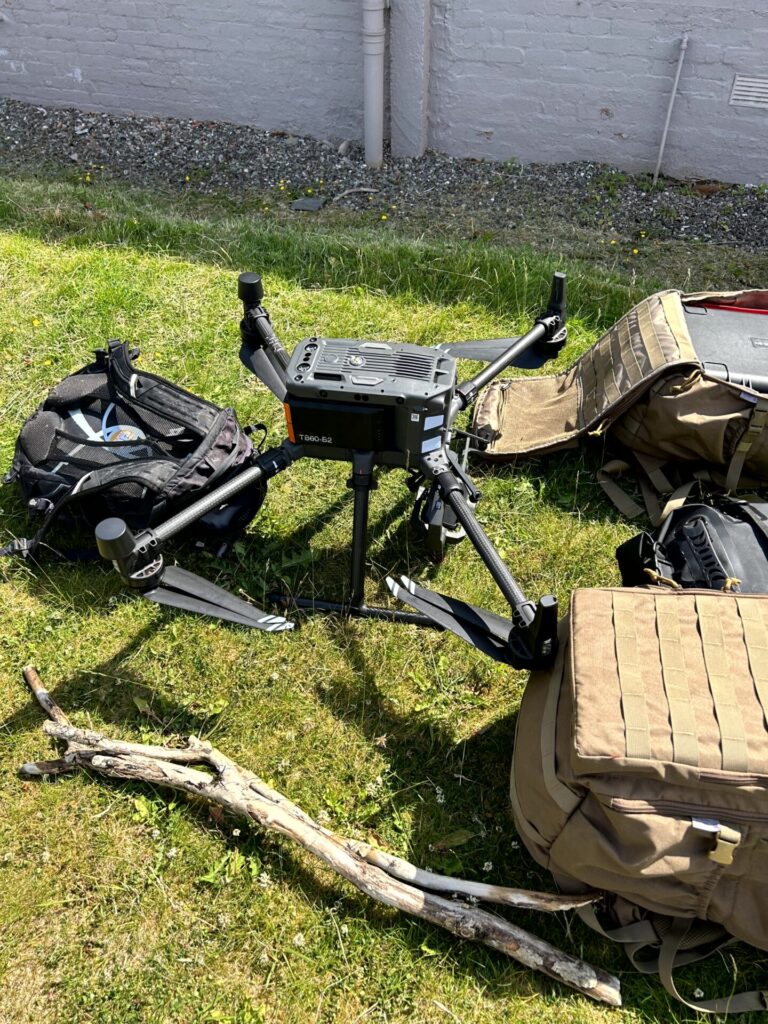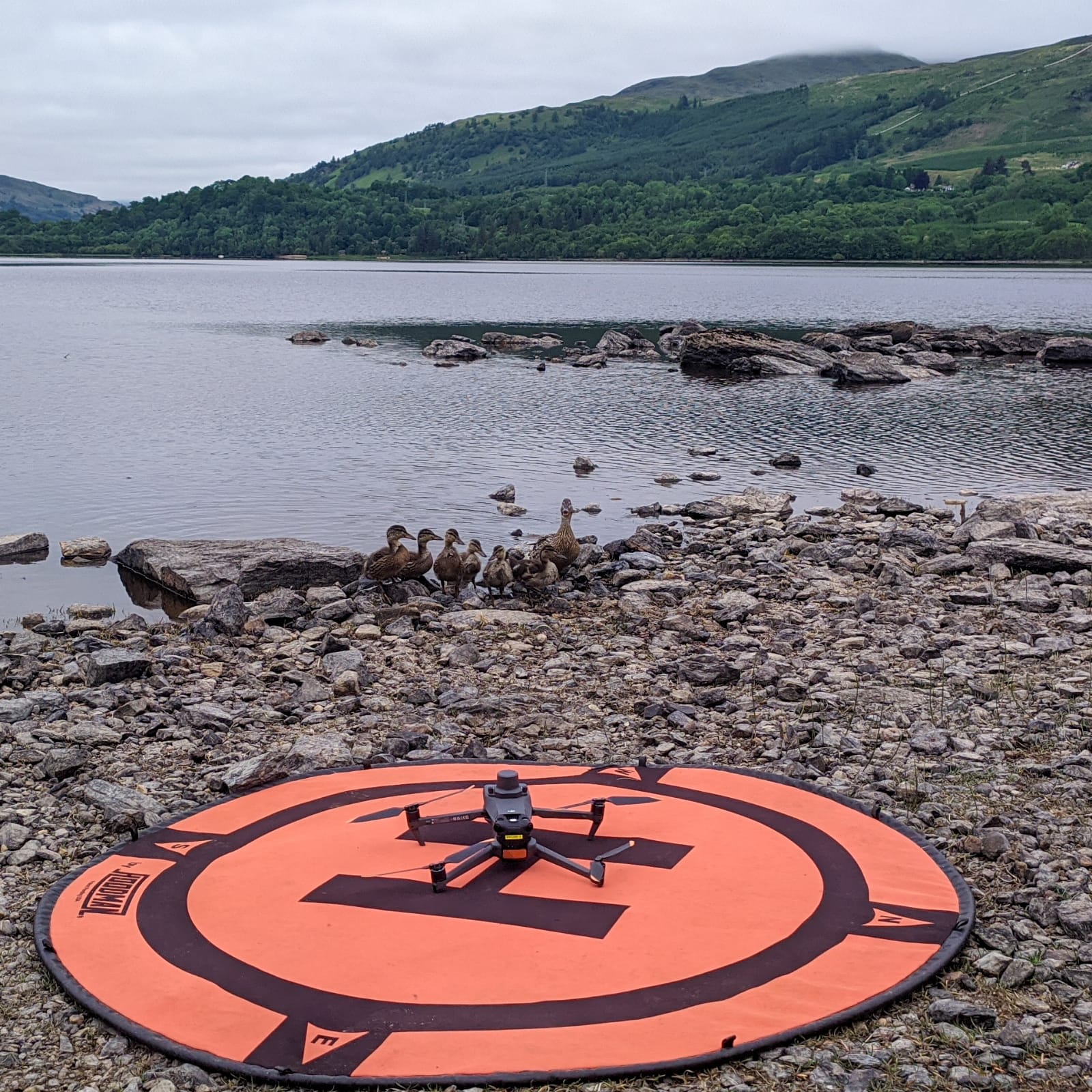
So after last year’s very successful Firbush field skills trip we thought we really couldn’t top it but how wrong we were. In June 2023 24 SENSE students and some special invited guest students (more about them later) headed north to the beautiful University of Edinburgh field skills centre at Firbush point on Loch Tay for a week of field skills training, outdoor pursuits and cohort building with staff from the School of Geoscience.
Collecting data in the field is very important when working with satellite data as it is often used to validate what we can see from the air and track down the locations where the data has been collected. Very important when dealing with data from vast areas.
The forecast for the week was looking good so the group were in high spirits when they arrived. First on the agenda was some outdoor activities including paddleboarding, sailing, windsurfing and orienteering before dinner and an introduction to the first two days training activities.
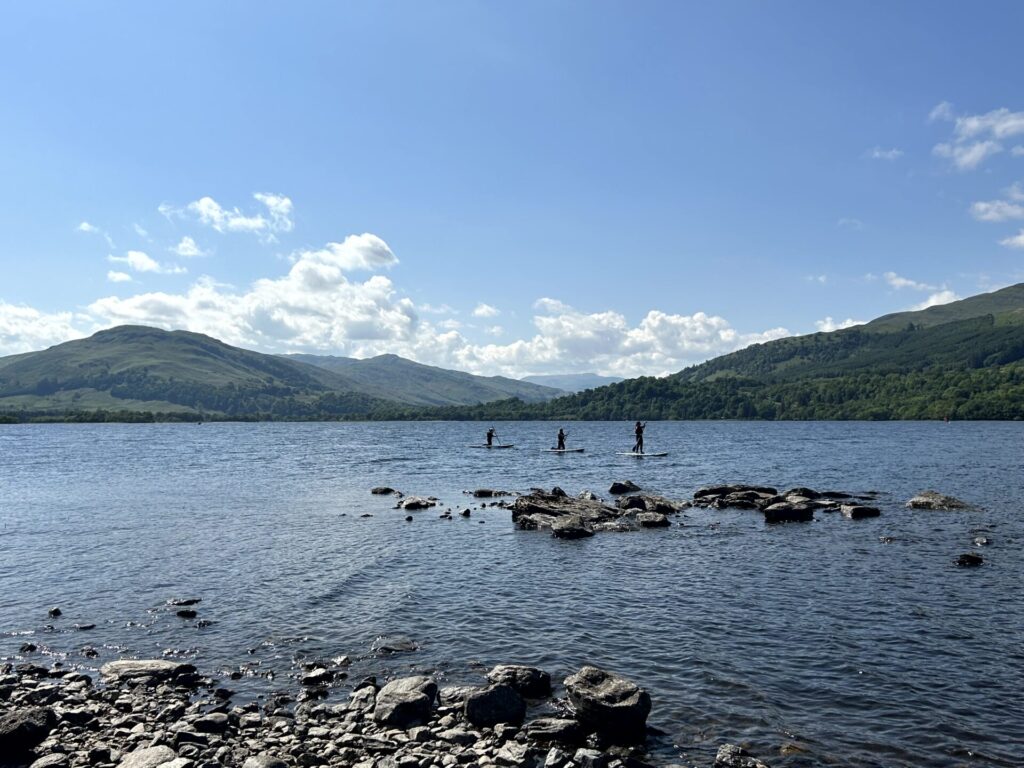
Drone operation led by Tom Wade (Airborne Research and Innovation) assisted by out fantastic demonstrators Liz Poulsom (E4 DTP) and SENSE students Charlotte Walshaw and Calum Hoad. Calum, Charlotte and Liz all use drones as part of their PhD research and have experience of using them in the field. Before we started Tom explained the process of risk assessment for flying drones and then everyone was able to get some experience of flying some of the smaller Mavic 2 & 3 drones. After everyone had a chance to try out the drones it was time for the team challenge – come up with a short drone flying sequence with a commentary and an entertaining accompaniment. The teams really rose to the challenge with some excellent flying and some inventive dance routine accompaniments although team ‘Mavic Mike’ was the overall winner.
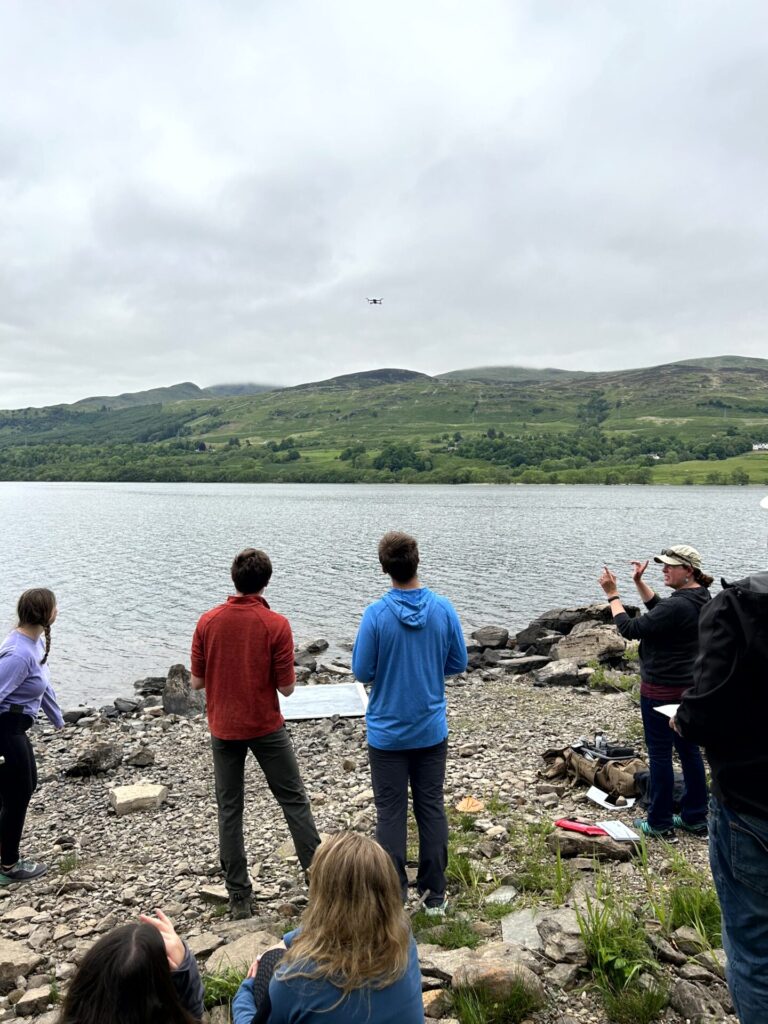
Day two of the drone training was focused on more complex drone operations such as demonstrations of collecting Lidar data from the surrounding forests and how to use a ranging station to record the points you are flying over. Calum and Charlotte also gave a talk in the evening about how they had used drone work in their field research – Charlotte in Antarctica and Calum in the Canadian arctic – hint watch out for bears.
We were also joined by Alex Merrington and Craig Atkins from the NERC field spectroscopy facility which is based at the University of Edinburgh. Field spectroscopy relates to the measurement of the optical characteristics of a surface and provides quantitative measurements of radiance, irradiance, reflectance or transmission. Analysis of specific areas of the spectral data can infer properties of the sample material, and various indices exist to quantify various parameters. The students had a chance to collect some data and then analyse it. FSF were also able to introduce their service which allows NERC funded researchers and PhD students to borrow equipment at no or very low cost to use in the field.

Our final activity was delivered by Harry Carstairs who has recently completed his PhD with the Mitchard group. Equipment for this was much more low tech in that included a tape measure and clinometer for measuring the height of trees. The challenge was to take a 20m radius section and measure the forest biomass. Harry is more used to the exotic location of the forest of Gabon for this type of field work but being a good field scientist had remembered an essential bit of kit for the students – midgie nets! The groups were given a few hours to do this and a few instructions so it was really interesting to see the different methods used and results they came up with. A great team building exercise as well as learning.

Day 4 of the training saw a change of team as we were joined by Mikael Attal and Alan Hobbs from the school of geosciences who was demonstrating the Acoustic Dopper Current Profiler (ADCP) and Global Navigation Satellite System (GNSS). The ADCP is used extensively by the Land Surface Dynamics group to investigate river velocity, turbulence, and erosional and sediment transport potential. It sits on a small craft which is towed behind a canoe and was taken in transects across the loch to give some information about what is happening under the surface. Mikael also gave a talk in his research which is part of the Land Surface Dynamics group and the students were particularly interested in his work on landslips.

The group was also joined during the week by team ice Anna Crawford, Bea Ricinos Rivas and Dan Goldberg from the glaciology research group who gave talks about their research. As a interdisciplinary centre SENSE covers a wide variety of topic areas we like to give our students opportunities to find out about areas of interest out with their normal research areas.

The week’s training ended with some more outdoor activities, another swim in the loch, a games night and then after another hearty breakfast the group headed back to Edinburgh on Friday morning a bit tired but happy with lots of new ideas and some new connections. It had been a great week in a fantastic location and a chance for the SENSE students to spend some time together and get to know their fellow students and staff a little bit better. Thank you so much to Tom, Liz, Charlotte, Calum, Harry, Alex, Craig, Alan, Mikael, Anna, Bea, Kathy and all the Firbush staff for an amazing trip and a really big shout out to Eleanor and Dan who worked so hard to put the week together.
Oh and also to mention a very exciting spot of a beaver near the centre – it seems word of the training got out!
